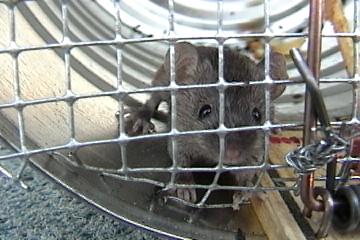 *
Note: Do not get a mousetrap that has yellow
plastic bait trays. Get conventional, old fashioned mousetraps. *
Note: Do not get a mousetrap that has yellow
plastic bait trays. Get conventional, old fashioned mousetraps. |
You'll need:
|
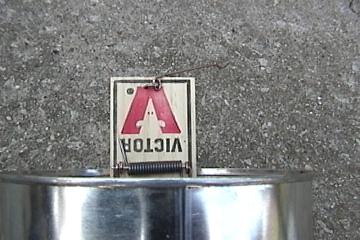 |
You're going to be mounting a mousetrap to the open end of a coffee can as shown, so that the hinge is right at the top edge of the can. |
 |
You can use two or three small screws to do this, as shown. |
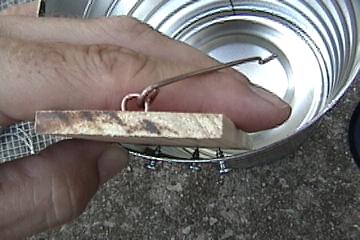 |
By pressing the trap against the partially driven
screws, you can easily mark the trap for drilling pilot holes. You'll need
these to avoid splitting the wood when driving the screws.
|
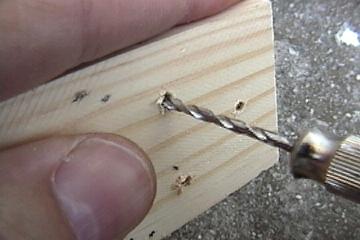 |
Simple enough. |
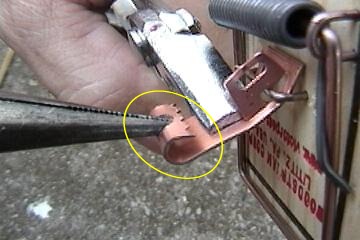 |
Before mounting the trap to the can, you're going to
bend the bait/trigger loop out of shape a bit.
Note: Don't bend anything outside the yellow ellipse, if you can help it. Otherwise, you'll have to perform some painstaking tweaking of the trigger when you've finished the trap. Your goal is to open up the curl, so that... |
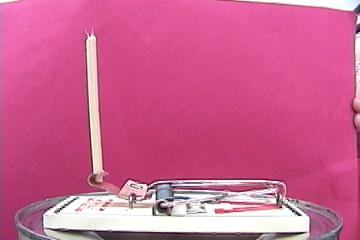 |
...when the trap is set, a length of the skewer will
stand straight up in the hole, with a tight fit.
You'll put the skewer piece in later. |
 |
Once you're content that you haven't screwed up the
trap's trigger with all this bending, press a drop of glue into each hole,
and mount the trap to the can. Note: It's also possible to do the following steps before mounting the trap to the can; it's a matter of whatever's most convenient for you. |
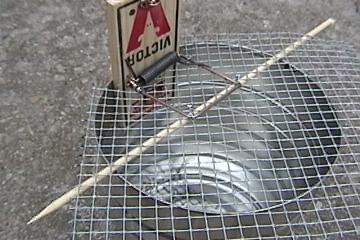 |
Place a piece of screen under the snapper as shown. I'm
using a skewer to keep the spring of the trap from bending the screen
until it's attached. Note: On this particular trap I mounted the screen at a 45 degree angle; usually I've mounted it so the warp and woof run parallel and perpendicular to the surface of the trap. Whatever catches your mouse will work fine. |
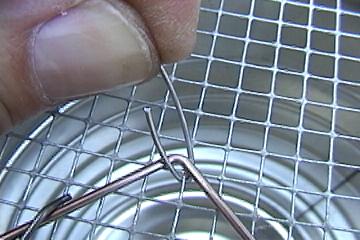 |
Use light wire to attach things. Twist it tightly with a pliers. |
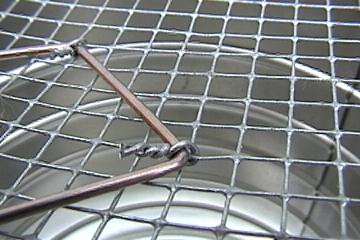 |
Secure each corner of the snapper, then lay your twists down flat against the screen so they don't get in the way when you set the trap. |
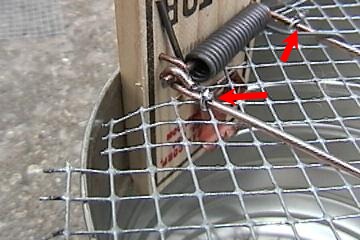 |
Don't forget a couple twists of wire at the root of the
snapper, to secure the screen there. When you start trimming the wire around the edge of the can, notice that there's a minor issue right next to the trap. A portion of the screen has to be bent a bit so that it's actually inside the can. This is because it's beneath the hinge and is actually rotating outward when the trap closes. If you don't do this, thing's will bend weirdly when you try to open the screen to set the trap. |
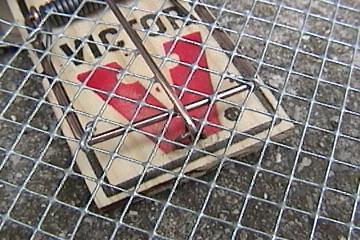 |
As you're securing things with the wire, you'll want to pay attention to where the retaining wire loops over the snapper. You can't let the screen obstruct its action. You can always trim out a piece of the mesh, if you need to. |
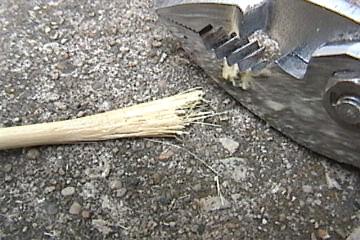 |
Whack on one end of the skewer piece. Shredding it a
bit makes it hold your bait very well. Note: Our infestation made it obvious what would make the best bait. The buggers had chewed on a Hershey's dark chocolate bar, among other things. I'll give 'em credit for good taste. So I used a lighter and melted a bit of the chocolate bar, applying it to the skewer along with some always-reliable peanut butter. |
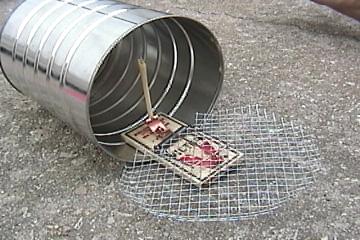 |
Insert the skewer piece in the trigger, and make final adjustments as needed. Smear just the top of the skewer with goodies, and leave the can in a tempting spot. Along a wall is always good. Inside a cupboard, as needed. On a pantry shelf, if your mice are climbers. Wherever you find their poop! |
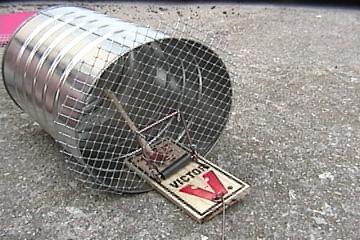 |
Snap! |
|
|
I heartily encourage suggestions! |
